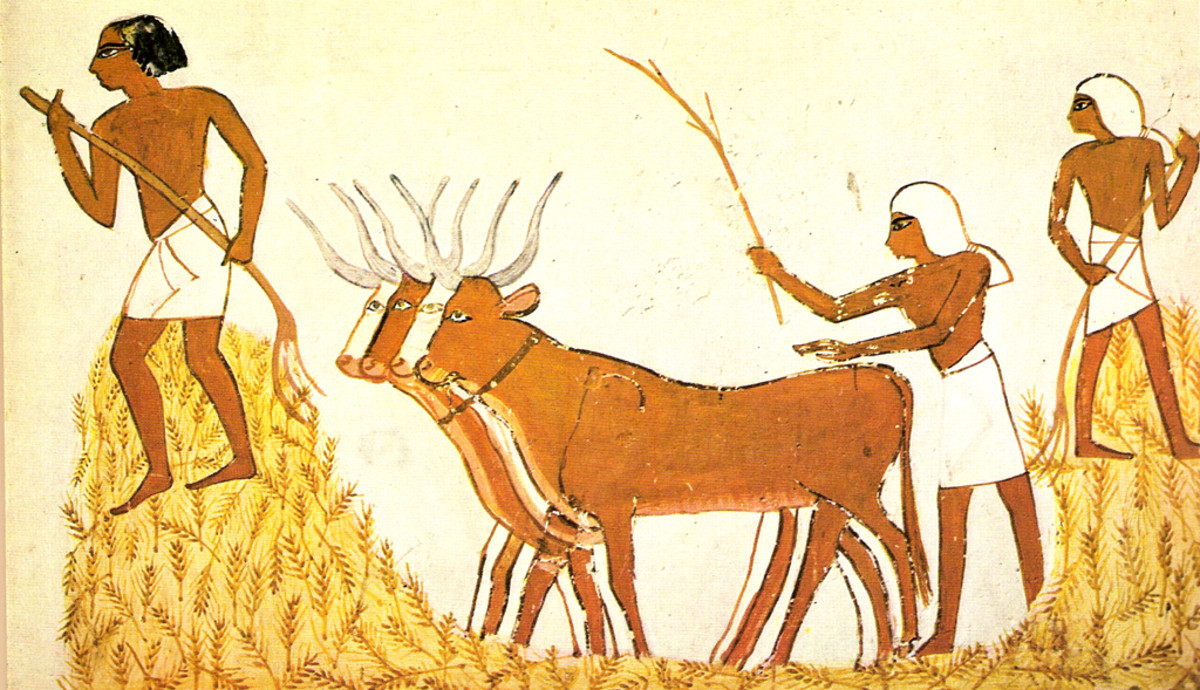AlexAP
Fuchsia
- Joined
- Nov 3, 2020
- Posts
- 14,157
- Reputation
- 29,621
Many users here have repeated a story that was spread among newspapers that said: In the Neolithic (8000 years ago), only 1 men reproduced for 17 women.

 psmag.com
psmag.com
It's one of the key "blackpills" in the PSL community: Most men never reproduced. But the truth is that most men actually did reproduce in history. This can be proven through the Y-Chromosome and the autosomal DNA.
The Y-Chromosome is inherited from every male to his offspring. You have exactly the same Y-Chromosome as your father, your grandfather, your grand-grandfather, etc. (The female equivalent is the mitochondrial DNA, it's inherited from every female to her offspring.)
The autosomal DNA is the whole DNA that you inherit from both mother and father.
The people who made up the 1:17-myth just looked at the Y-Chromosomes who exist in todays population and saw that most of them couldn't be traced back to the Neolithic (while most of the mitochondrial DNA of todays humans can be traced back to that time), meaning that most men from that time don't have ancestors living today. Their explanation was: Most men didn't reproduce at that time.
But the real explanation for this is: Most Neolithic men did reproduce, but their lineages died off over the centuries and millennia.
Why did so many more lineages died off than female lineages? The reason can be called the Genghis Khan effect (I made this term up): Imagine there is one powerful man, let's say a king, who takes 100 wives. His sons become powerful too and they will impregnate more than one woman. The first king will have enormous reproductive success, his Y-Chromosome will definitely survive over the time. Not only because of him taking 100 wives, but also because his sons will be probably reproducing with 3-5 women on average.
The Y-Chromosome that Genghis Khan had has about 16 million descendants today:

 www.nationalgeographic.com
www.nationalgeographic.com
One Irish king from the 5th century has 3 million descendants today, most of them in the US:

 extra.ie
extra.ie
However, the fact that there are so many men with the king's Y-Chromosome means that everytime they reproduce, it's the same lineage, genetically speaking. But in every generation, a few Y-Chromosomes die off, because even if 90% of men reproduce, 10% do not. This means: Many of the Thousands of Thousands of the king's descendants will "absorb" other lineages when they reproduce.
There is no equivalent effect for women. No women had 100+ kids (and them all having 10+ kids). Therefore, the female lineages have a much higer chance to survive over the centuries and millennia. Basically, there were no big lineages who absorbed many other, smaller lineages over centuries and millennia. In general, there is twice more mitochondrial DNA in todays humans than Y-Chromosomes.
The proof for this explanation is the autosomal DNA. As said above, the autosomal DNA is the whole DNA that humans inherit from both mother and father. And the autosomal DNA diversity observed in humans did not decline much since the Neolithic.
Another hint for the fact that most men did reproduce in history is the fact that there is no observed society in which a few men monopolized reproduction. Not in the prehistoric societies that still exist today, not in the islamic societies which allow polygamy, and not in any other. It's clear that in every society, most men did reproduce. It was never only the top 5-10% (or "Chad only").

8,000 Years Ago, 17 Women Reproduced for Every One Man
An analysis of modern DNA uncovers a rough dating scene after the advent of agriculture.
It's one of the key "blackpills" in the PSL community: Most men never reproduced. But the truth is that most men actually did reproduce in history. This can be proven through the Y-Chromosome and the autosomal DNA.
The Y-Chromosome is inherited from every male to his offspring. You have exactly the same Y-Chromosome as your father, your grandfather, your grand-grandfather, etc. (The female equivalent is the mitochondrial DNA, it's inherited from every female to her offspring.)
The autosomal DNA is the whole DNA that you inherit from both mother and father.
The people who made up the 1:17-myth just looked at the Y-Chromosomes who exist in todays population and saw that most of them couldn't be traced back to the Neolithic (while most of the mitochondrial DNA of todays humans can be traced back to that time), meaning that most men from that time don't have ancestors living today. Their explanation was: Most men didn't reproduce at that time.
But the real explanation for this is: Most Neolithic men did reproduce, but their lineages died off over the centuries and millennia.
Why did so many more lineages died off than female lineages? The reason can be called the Genghis Khan effect (I made this term up): Imagine there is one powerful man, let's say a king, who takes 100 wives. His sons become powerful too and they will impregnate more than one woman. The first king will have enormous reproductive success, his Y-Chromosome will definitely survive over the time. Not only because of him taking 100 wives, but also because his sons will be probably reproducing with 3-5 women on average.
The Y-Chromosome that Genghis Khan had has about 16 million descendants today:

Genghis Khan a Prolific Lover, DNA Data Implies
Genghis Khan, the fearsome Mongolian warrior of the 13th century, may have done more than rule the largest empire in the world; according to a recently published genetic study, he may have helped populate it too.
One Irish king from the 5th century has 3 million descendants today, most of them in the US:

Over Three Million People Are Descended From Legendary Irish High king
As many as 3 million people worldwide are descended from the legendary Irish high king Niall of the Nine Hostages.
However, the fact that there are so many men with the king's Y-Chromosome means that everytime they reproduce, it's the same lineage, genetically speaking. But in every generation, a few Y-Chromosomes die off, because even if 90% of men reproduce, 10% do not. This means: Many of the Thousands of Thousands of the king's descendants will "absorb" other lineages when they reproduce.
There is no equivalent effect for women. No women had 100+ kids (and them all having 10+ kids). Therefore, the female lineages have a much higer chance to survive over the centuries and millennia. Basically, there were no big lineages who absorbed many other, smaller lineages over centuries and millennia. In general, there is twice more mitochondrial DNA in todays humans than Y-Chromosomes.
The proof for this explanation is the autosomal DNA. As said above, the autosomal DNA is the whole DNA that humans inherit from both mother and father. And the autosomal DNA diversity observed in humans did not decline much since the Neolithic.
Another hint for the fact that most men did reproduce in history is the fact that there is no observed society in which a few men monopolized reproduction. Not in the prehistoric societies that still exist today, not in the islamic societies which allow polygamy, and not in any other. It's clear that in every society, most men did reproduce. It was never only the top 5-10% (or "Chad only").


